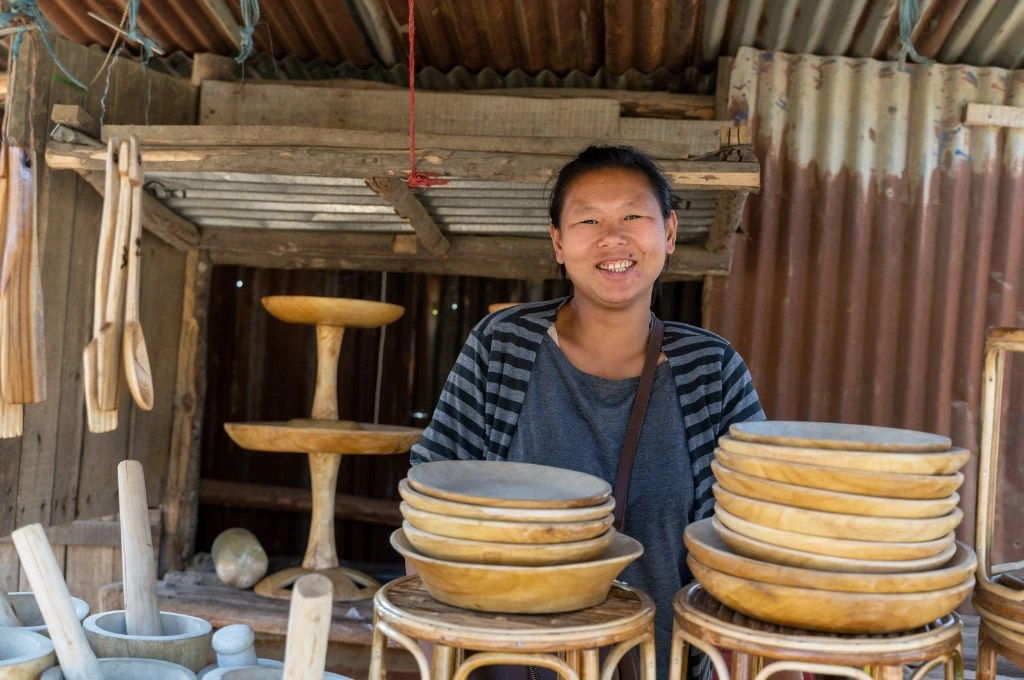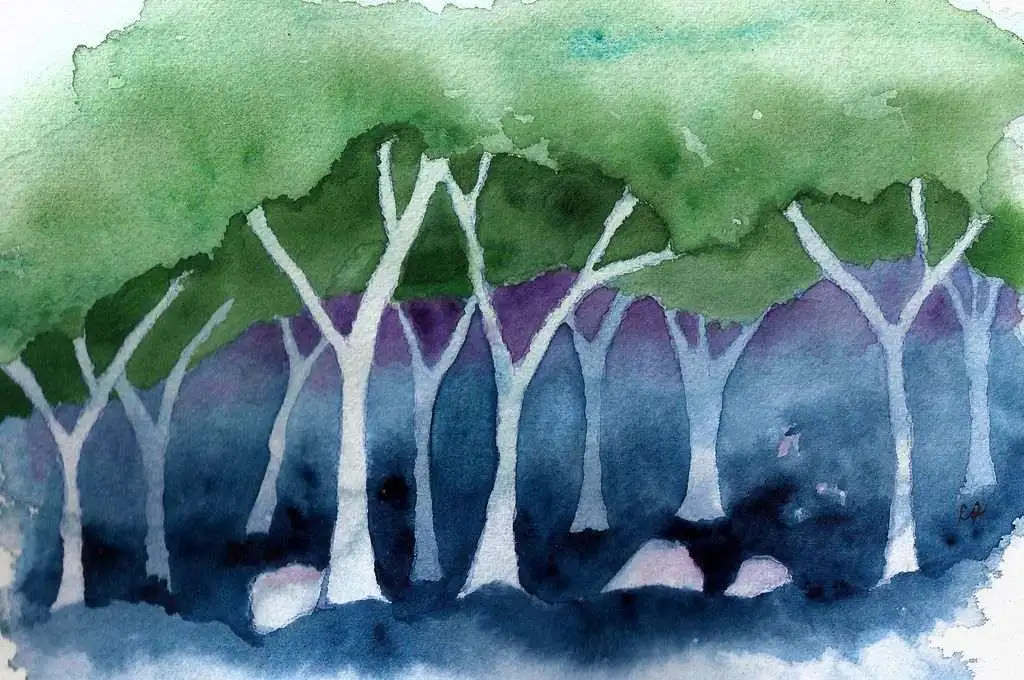In an earlier piece on IDR, I explored connection and abstraction as two distinct approaches to systems change. That framing was meant to start a conversation, to ask what it takes to build what I call a rainforest of change in a world so often drawn to the efficiency of plantations. A rainforest conjures images of abundance, resilience, and diversity—a thriving ecosystem in which each element plays a role in sustaining the whole. A plantation, by contrast, symbolises uniformity, control, and extraction, where the goal is not thriving but harvesting.
Since writing that piece, I’ve been reflecting on the ways connection and abstraction interact, not as binaries but as polarities. They’re not opposites; they’re interdependent. The tension between them doesn’t have to pull us apart. It can hold us in balance, like the dance between the roots and branches of a tree.
This follow-up piece builds on that idea. It draws on recent conversations and experiences to look more deeply at the relationship between connection and abstraction, the role of trust and language, and what it means to lead in a way that honours both.
In a recent conversation with Rajesh Kasturirangan at Socratus, I spoke about the concept of terroir. It wasn’t his framing, but it became a starting point for our dialogue about connection, abstraction, and systems change. I used terroir to describe how deeply place matters—how the soil, history, relationships, power dynamics, and culture of a community create a unique context that resists replication, and how this context must be understood and respected. Just as wine reflects the terroir of the vineyard, change reflects the terroir of the community—and in systems change, we cannot treat every community as a blank slate.
Rajesh pushed back not to dismiss the value of connection or terroir, but to emphasise that abstraction matters too. His point was that we shouldn’t think of them as oppositional. Rather, they are part of the same ecosystem, each enriching the other.
This brought me back to a widely used metaphor when comparing systems work with project-based approaches: the rainforest versus the plantation.
Systems work as rainforests
The rainforest is the model we often hold up as an ideal—diverse, resilient, and alive with connection. But saying we want to create rainforests of change means little unless we understand what it actually takes to nurture one. Rainforests are the result of countless unseen relationships of roots, fungi, and microbes all working together in ways we cannot always observe or control.
Contrast that with a plantation. It’s certainly efficient, but only in a narrow sense. It replaces diversity with monoculture, relationships with extraction, and adaptability with rigidity.
The more I think about it, the more I see how much of our work risks becoming plantation-like when we lean too heavily on abstraction. Frameworks can flatten the complexity of the systems we’re working in, turning vibrant ecosystems into neatly pruned rows—useful, but also brittle.
Rajesh offered an important clarification here: patterns, he said, are not the frameworks themselves, nor are they abstract blueprints. Instead, they are regular, repeated forms that emerge from the underlying structures, whether in nature or communities. They arise when the conditions of connection, trust, and collaboration allow something meaningful to grow.
This idea of patterns as a bridge between connection and abstraction is powerful. It suggests that while abstraction helps us recognise patterns, it is connection that makes those patterns meaningful and rooted.

How we lead
Two podcast conversations I listened to recently, one with Jim Dethmer and another with Karen Kimsey-House, offered language that deepened the idea of leadership for me. They discussed different ways of showing up: ‘to me’, ‘by me’, ‘through me’, and ‘as me’. It struck me how closely these ideas map onto the tension between connection and abstraction.
‘To me’ is an approach of helplessness where life is something that happens to us. There’s little agency here, only reaction. ‘By me’ is where most of us spend our time as leaders. It’s about taking charge, creating outcomes, and owning our role in the process. It is empowering, but it can also lead to overcontrol and trying too hard to shape the world to our will.
The shift to ‘through me’ feels like the key here. It’s a practice of letting go, not of responsibility but of attachment. Karen expresses this well: when we lead ‘through me’, we allow the frameworks to recede into the background. They don’t disappear; they’re still there, but they no longer dictate the moment. Instead, we make room for what’s emerging. This requires trust, not in the sense of blind faith, but in a kind of grounded confidence that the system knows what it needs, that the connections will hold.
Our words, if we’re not careful, can become tools of control rather than connection.
What stood out most to me was this idea of invisible networks. In a rainforest, the mycelial web is what connects everything, shuttling nutrients and information between species. In systems change, those networks are the relationships, trust, and shared purpose that hold a system together. The networks are not always visible, but they’re essential. And they can’t simply be transplanted from one place to another. They have to be cultivated, nurtured over time. Trust plays a key role in this—it is not a soft variable, but the primary infrastructure of flourishing, resilient systems, as relational theorists suggest. However, for trust to thrive, belonging alone is insufficient; action is necessary too. Belonging is foundational, but it cannot substitute for action. Trust deepens when it is made visible through showing up, following through, and co-creating the future together.
Donella Meadows touches on this in her reference to Wendell Berry’s concept of ‘tyrannese’—language that abstracts so much it loses its grounding in lived experience. Meadows, echoing Berry, warned that our words, if we’re not careful, can become tools of control rather than connection.
But language can also be expansive. It can help us make the invisible visible and give shape to the networks we sense but can’t always see. This ties back to Rajesh’s emphasis on trust as a foundational virtue, one that not only connects people but also allows the emergence of empathy, justice, insight, and complexity.
The idea of trust
The podcasts also touched on something else that feels relevant here: the idea of trust. To lead ‘through me’ is to trust not just the system, but ourselves. Jim talked about the work it takes to get there, the inner stability we need to stop outsourcing our sense of ‘okayness’ to external markers of approval or control. That’s not easy. It means letting go of certainty, of the need to be right, of the urge to cling to frameworks as a safety net. But it’s also freeing. When we trust, we make space for something new to emerge.
This is where connection and abstraction can meet—not as opposites, but as complements. Abstraction helps us see patterns, while connection reminds us that those patterns are rooted in place, in relationships, in the invisible networks that sustain life. The art lies in holding both, in knowing when to let the framework guide us and when to let it go.
This isn’t just a question for leaders; it’s a question for all of us who care about change. How do we resist the pull towards control and instead lean into the messiness of connection? How do we create systems that honour the terroir of each place while still learning from one another? How do we trust in the mycelial web of the rainforest, even when we can’t see it?
These aren’t easy questions, but they’re the ones I want to sit with. Maybe it begins with simply noticing when we reach for control, and when we might lean into trust instead. And today, as large-scale technologies increasingly abstract people’s lived realities, the need to restore connective language and practice feels even more urgent.
Because the more I think about it, the more I believe that the work we’re trying to do—whether it’s in leadership, systems change, or simply in being human—can’t be done without them. Connection and abstraction, roots and branches—what grows between them is what we call change, and like any living thing, it needs care, attention, and time.
—





